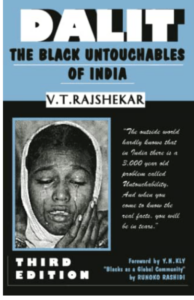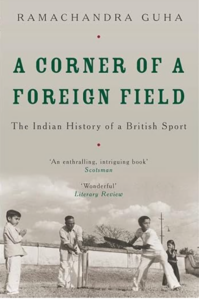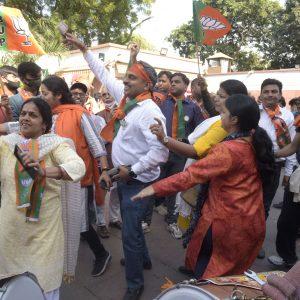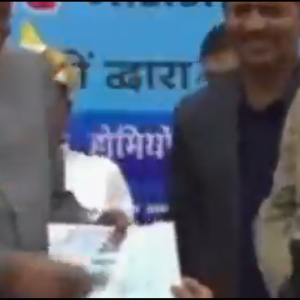Deeper look at Glitz and Glamour of Indian Cricket
India needs to follow South Africa to make cricket an inclusive sports by giving representations to all communities to foster diversity and inclusivity
By Iftikhar Gilani
As Americans are enthralled by the spectacle of football and baseball, cricket has emerged as a beacon of glitz and glamour in South Asia. While this sport enjoys popularity in Australia, South Africa, England, and the West Indies, it has particularly cemented its place in the hearts of South Asians.
Despite sharing some similarities with baseball, cricket distinguishes itself with its unique rules, techniques, and settings.
To extend cricket’s reach into the American continent, the U.S. and the West Indies recently co-hosted the world championship of its 20-over format. This tournament concluded with a riveting final, where India triumphed over South Africa. Both teams displayed commendable skill and determination throughout the competition.

However, beneath the surface of this celebrated sport lies a complex issue.
Unlike South Africa, which has actively integrated Black Africans and Asians into its post-apartheid cricket teams, India faces criticism over the under-representation of its diverse communities, particularly the Dalits, often referred to as the ‘Black untouchables’.
These lower-caste Hindus, along with the Other Backward Castes (OBCs), constitute about 70% of India’s population, yet remain significantly underrepresented in the cricketing arena.
An analysis of India’s 15-member squad for the recent championship reveals a stark disparity: seven players are upper-caste Hindus, three are from OBCs, one is Dalit, two are Sikhs, one is Muslim, and one is Christian.
Historically, Dalits have rarely been included in India’s cricket teams. Out of approximately 300 cricketers over the past century, only six or seven Dalit players have made it to the national team.
Meritocracy should ideally guide sports selections, not caste or region. However, when a game becomes a pathway to fame and fortune, it is crucial to ensure it represents all societal sections. The U.S. has successfully mainstreamed disadvantaged groups through sports, with Black athletes achieving remarkable international success due to encouragement at various levels.
The question arises: why isn’t a substantial portion of India’s population being nurtured for lucrative cricket careers from the grassroots level? Are lower-caste players being deliberately excluded, or do they lack adequate preparation and opportunities?
In the past 100 years, upper castes have been disproportionately represented in the Indian team.
While they comprise about 15% of India’s population, their representation in cricket has been significantly higher. The current team has over 46% upper-caste players. Incidents like a senior player Yuvraj Singh derogatorily calling greenhorn Dalit player Yuzvendra Chahal a “Bhangi” (sweeper) highlight the prejudices that persist. Although Singh later apologized, such incidents reveal an underlying resistance to accepting Dalit players in the prestigious arena of cricket.
-Story of Dalit cricketer
Only a few Dalits, including Palwankar Baloo, Eknath Solkar, Karsan Ghavri, Vinod Kambli, Bhuvneshwar Kumar, and Yuzvendra Chahal, have played international cricket for India.
Union Minister and Dalit leader Ramdas Athawale once suggested a quota for Dalit players, akin to the inclusion of Black players in South Africa. This idea, also proposed by Board of Cricket Control of India (BCCI) Secretary Niranjan Shah in 2008, faced significant opposition and was ultimately shelved.
Researcher Srivayam Anand suggests that cricket’s non-contact nature aligns with Brahmin customs, as Brahmins, who are at the top of the Hindu caste hierarchy, traditionally avoid physical contact with lower castes.

Historian Ramachandra Guha notes that several Dalit players were part of Indian cricket when the British introduced the game in the late 19th century.
Palwankar Baloo, born in 1875, was a notable Dalit cricketer who faced social ostracism despite his talent. His story reflects the broader challenges Dalit players have historically faced.
He came from a family of cobblers (Chamar) and worked at the Bombay Gymkhana Club. British officers discovered his talent and let him bowl then during net practice to improve their batting. At that time, the local team of the city, known as the Brahmin team, tried to defeat the British team. They included Balu in the team.
Although he mingled with the other players on the field, he was not allowed to come into the dressing room or eat with the other team members. Tea was either served to them in an earthenware pot or they had to bring their own cup from home.
After his return from Europe, the Depressed Class Association in Bombay organized a reception in Balu’s honour, which was also attended by Dalit leaders Dr. B.R. Ambedkar, who later became India’s first law minister after independence in 1947.
Historian Ramchandra Guha has compared Balu to the heroes of the civil rights movement like American superstars Jackie Robinson and Muhammad Ali. This great Indian cricketer Palvankar Balu has been forgotten because of his Dalit identity. Hardly anyone knows about him. No monument, no statue and no tournament has been named after him.
Baloo and his brothers Shivaram, Ganpath, and Vimal also played cricket, with Balu achieving significant success. Despite his performance, caste discrimination led to his exclusion from the team. In protest, his brothers also quit cricket, citing humiliation based on caste.
Many Dalits were part of local and national cricket until the early 20th century. But as soon as the rulers of the various Indian provinces in British India began to promote the sport of cricket, the number of Dalit cricketers declined
This discrimination persisted when corporate sponsorship replaced royal patronage. Fluency in English, education, and sophistication became essential for cricketers, making it harder for rural, lower-caste players to break into the sport.
-South Africa shows the way
South Africa, after apartheid, reformed its cricket selection process to ensure non-white representation. The Cricket Association mandated that at least six non-white players be included in the national team, leading to the rise of prominent non-white cricketers like Omar Henry, Herschel Gibbs, Paul Adams, Kagiso Rabada, and Hashim Amla.
Despite initial resistance, the government emphasized that the team must reflect the country’s diversity. This approach paid off, as South Africa produced numerous talented non-white players without compromising team performance.
In the current tournament, South Africa’s team included six non-white players, with two Black Africans. This diversity did not hinder their success; they showcased their prowess against India in the finals.
The representation policy, which led some white players like Kevin Pietersen to leave, but it did not deter the South African cricketing authorities to make it mandatory for the inclusion of Asians and Blacks in the team to make it representative and send a message of diversity.
India’s recent cricket triumph is a moment of national pride but also calls for introspection.
Ensuring inclusivity in cricket could provide a platform for all communities to share in the sport’s glamour. The need for a more representative approach is evident, and India could benefit from policies similar to those in South Africa, fostering diversity and inclusivity in its cricketing future.










